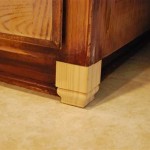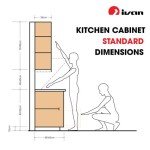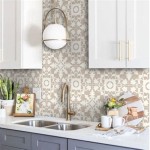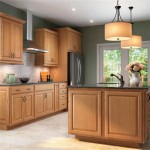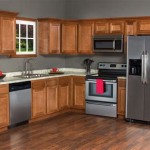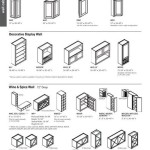Where to Place Handles on Kitchen Cabinet Doors
Handles are an essential part of kitchen cabinet doors, as they allow you to easily open and close them. However, the placement of handles can greatly impact the overall look and functionality of your kitchen. Here are some essential aspects to consider when determining where to place handles on kitchen cabinet doors:
Ergonomics
The primary consideration should be ergonomics. Handles should be placed in a way that allows for comfortable and efficient use. The ideal placement for handles is within easy reach of the user, typically between 30 and 42 inches from the floor. The height should also be comfortable for both tall and short users, so a height of around 36 inches is often recommended.
Accessibility
Handles should be accessible from both sides of the cabinet door. This is particularly important for drawers and corner cabinets, where access from both sides is necessary. In such cases, consider using handles that extend the full width of the drawer or door, or opt for double handles.
Aesthetics
The placement of handles should complement the overall design of your kitchen. For a modern, minimalist look, consider using recessed handles or finger pulls. For a more traditional style, opt for knobs or larger handles with decorative details. The finish of the handles should also match the cabinetry hardware, such as hinges and drawer slides.
Functionality
Handles should be functional and not hinder the use of other appliances or fixtures. Avoid placing handles too close to the edges of the door, as this can make it difficult to grip them. Similarly, avoid placing handles directly above or below other hardware, such as drawer slides or hinges, to prevent interference.
Types of Handles
The type of handle you choose will depend on your personal preference and the style of your kitchen. Here are some common types of cabinet handles:
- Knobs: Small, round handles that are easy to grip and install.
- Pulls: Longer, horizontal handles that provide a more substantial grip.
- Recessed handles: Handles that are set into the cabinet door, creating a flush surface.
- Finger pulls: Small, indentations on the cabinet door that allow you to open it with your fingertips.
Additional Considerations
In addition to the essential aspects mentioned above, there are a few other considerations to keep in mind when placing handles on kitchen cabinet doors:
- Door size: The size of the cabinet door will influence the size and placement of handles. Larger doors may require longer handles, while smaller doors can accommodate smaller knobs or pulls.
- Door style: The style of the cabinet door can also impact handle placement. Shaker-style doors, for example, often have a recessed panel that is suitable for recessed handles or finger pulls.
- Personal preference: Ultimately, the placement of handles should reflect your personal preference. Experiment with different placements and see what feels most comfortable and aesthetically pleasing to you.
By considering these essential aspects, you can determine the optimal placement for handles on kitchen cabinet doors to ensure both functionality and aesthetics in your kitchen.

How To Install Cabinet Handles Ultimate Stress Free Tips

Cabinet Hardware Installation Guide At Cabinetknob Com

How To Place Cabinet Knobs Pulls

How To Install Cabinet Door Handles True Position Tools

How To Place Cabinet Knobs Pulls

Learn How To Place Kitchen Cabinet Knobs And Pulls Cliqstudios

How To Install Cabinet Handles Ultimate Stress Free Tips

Kitchen Cabinet Handle Placement Dos And Don Ts Living Letter Home

Cabinet Hardware Placement Guide

Learn How To Place Kitchen Cabinet Knobs And Pulls Cliqstudios
Related Posts

